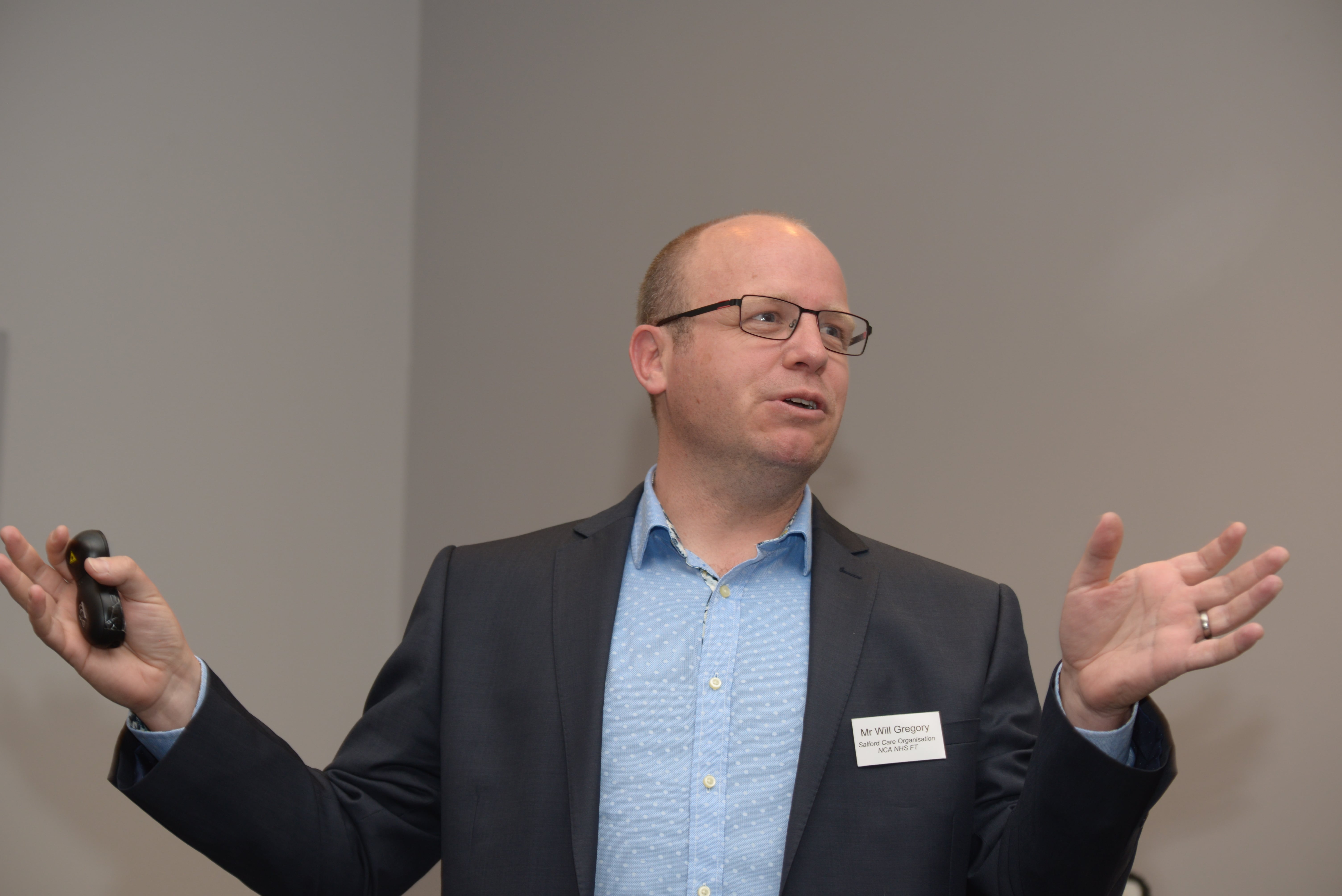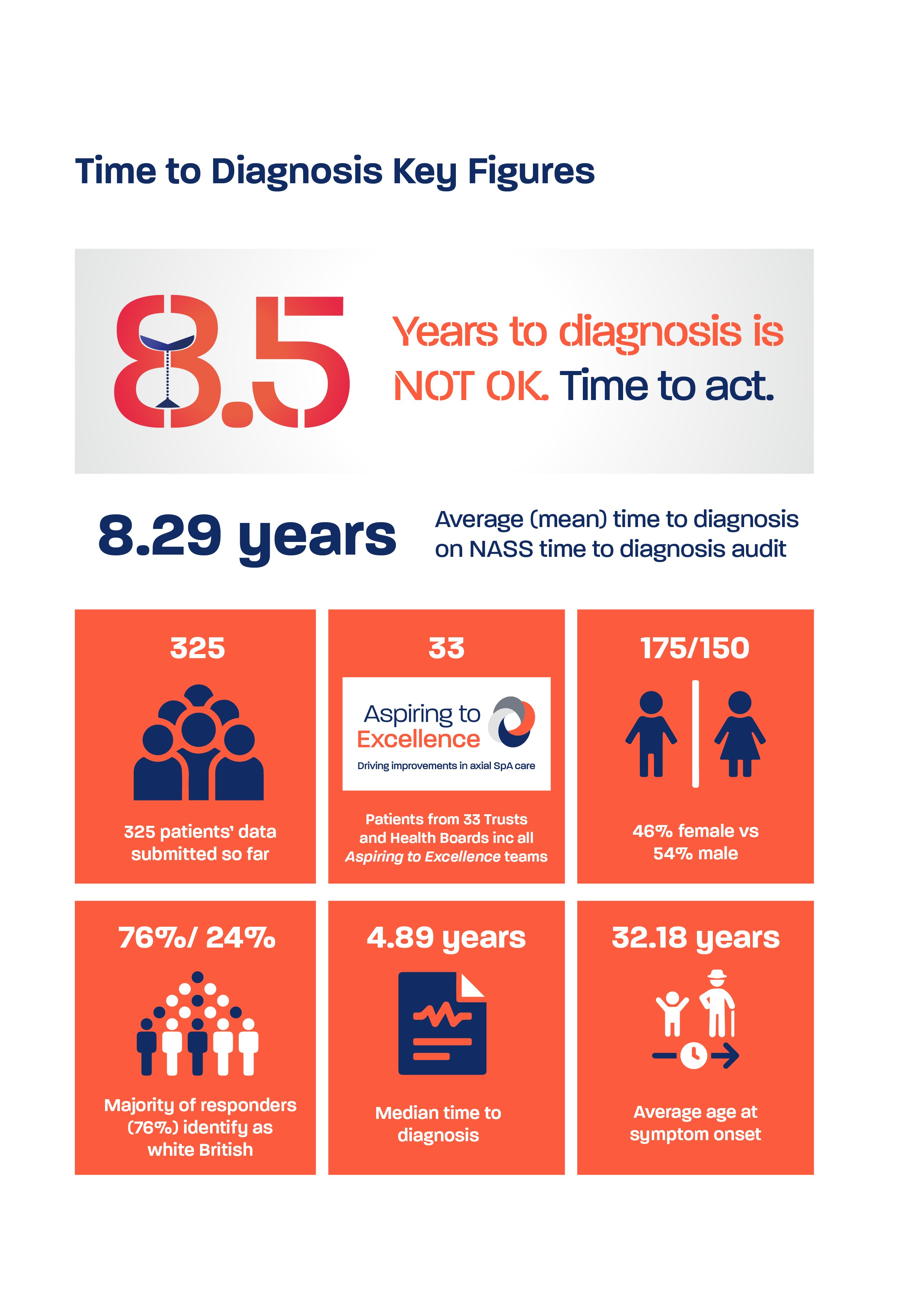
NASS CEO Dr Dale Webb introduces the report launch by summarising:
“The results of this first audit should galvanise efforts to drive reduction in diagnostic delay and create debate on what we should aspire to, so that nobody has to live for long periods with debilitating and painful symptoms and no agreed diagnosis and treatment plan.”

Dr Marian Chan, Consultant Rheumatologist and Clinical lead axial SpA services at Bedfordshire Hospitals NHS Foundation Trust remarked on here teams involvement in the audit as:
“This new audit tool – enabling patients to share their diagnostic journey and key steps in that journey – has revalidated our understanding that the majority of our delay is within primary care. The audit tool has not only furthered our understanding of where our unmet needs are but will allow us to continue measuring the impact of change, tracking this more quickly and efficiently, locally, and nationally.”

Will Gregory, Consultant Physiotherapist and Clinical Governance Lead, Rheumatology, Salford Royal Hospital and Vice President of the British Society for Rheumatology speaks of the power of the audit tool in practice:
“The team at NASS, the Aspiring to Excellence teams and all rheumatology services contributing to this audit must be congratulated on the creation, at speed, of a nimble audit tool that is proving an effective way to explore where the delays in diagnosis of axial SpA lie across the UK and through multiple health care providers. Having data to support the broader musculoskeletal workforce answer the question of “but what can I do?” is vital as we seek to decrease delay to diagnosis and hence improve quality of life for those living with axial SpA.
Also, as the BSR NEIA audit moves into its sixth year and expands to collect data from more rheumatology presentations it is useful that NASS offer a condition-specific audit to help guide potential national changes that could facilitate the identification and treatment of rheumatology conditions more rapidly”
View and read the full report: What is the average time to diagnosis for axial spondyloarthritis in the UK?
NASS wants to take this opportunity to thank all the 19 Aspiring to Excellence teams who have taken part in the audit to date, the additional rheumatology teams signed up, the programme sponsors and of course the patients who took the time to complete the survey.
This survey and audit tool is funded by the Aspiring to Excellence programme which is led by NASS in partnership with BRITSpA and the NHS Transformation Unit and sponsored by Abbvie, Biogen, Lilly, Novartis and UCB.




